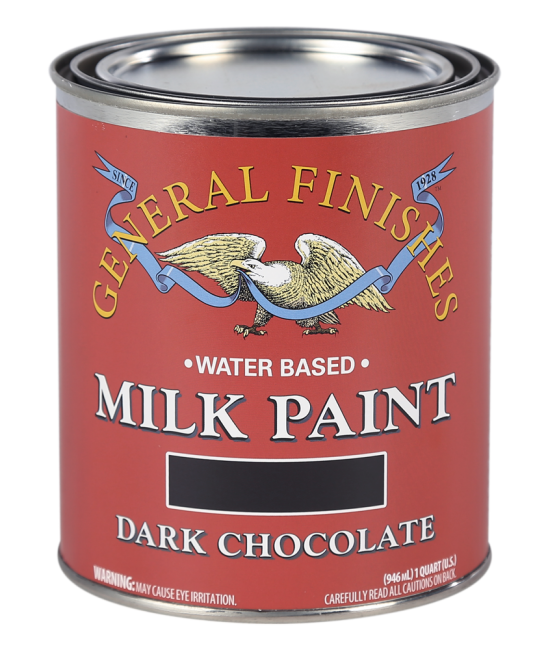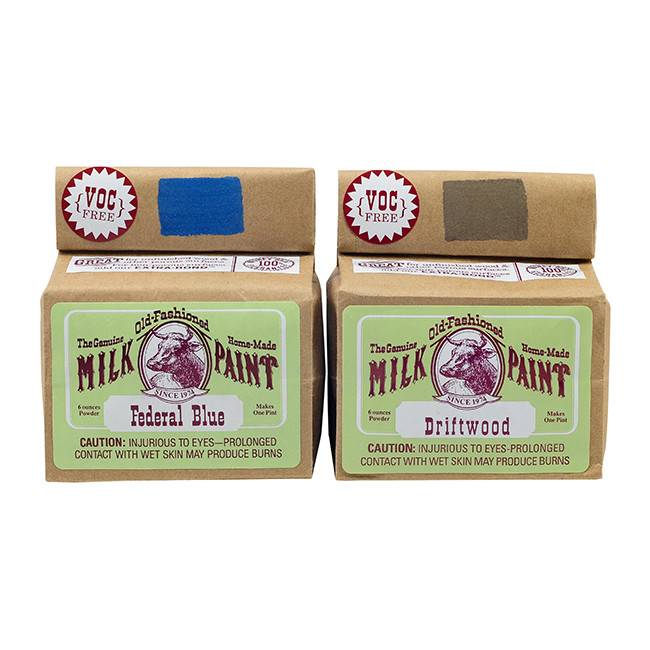We may receive a commission when you use our affiliate links. However, this does not impact our recommendations.

This is mislabeled (nice word) milk paint.
A few days ago I read an article in a popular woodworking magazine (not Popular Woodworking) about milk paint and I noticed that the product being discussed was packaged in cans. But that’s not the way milk paint is sold! It’s sold as a powder you mix with water. Milk paint is pigment, lime and casein, the main protein in milk. Milk paint will quickly spoil in liquid form.
So what is this product I’m looking at labeled “Milk Paint?” I do what I always do when I want to know more about a finishing product. I find its material safety data sheet (MSDS, or more frequently now, SDS) online. It used to be that you had to get a manufacturer to mail you their SDSs. Now almost all manufacturers put them online, which is a great service in my opinion.
I find the SDS for this company’s milk paint. It says it contains acrylic polymer (19-23%), propylene glycol (1.75-2.75%) and glycol ethers (1.5-2.7%) among other ingredients not pertinent to the type of coating. So it’s an acrylic paint, similar to what you might buy at the paint store and use on your interior woodwork or exterior siding. It has nothing to do with what has been known and used for thousands of years, called milk paint.
I doubt there’s anything wrong with this acrylic paint; there’s no reason not to use it. But it is very deceptive for this company to call it “milk paint.”
The reason woodworkers find finishing so difficult is not because the products are difficult to apply; it’s because of deceptive, and even outright false, labeling. A common example that I’ve pointed out often is the labeling of thinned varnish as tung oil, an entirely different finish.
I have built my writing and teaching career around pointing out these user-unfriendly practices. Some companies seem to be more guilty of them than others.

This is the way real milk paint is packaged.
The primary supplier of real Milk Paint since 1974 is The Old Fashioned Milk Paint Company, which you can find online and read about the history of milk paint. In my experience the person most responsible for putting this company and product on the map for woodworkers is Michael Dunbar who singlehandedly revived the interest in making Windsor chairs.
Mike has written a number of books and articles on constructing these chairs, and he taught all around the country for decades. Finally, he grew tired of traveling (as I did also) and started his own school called The Windsor Institute. His most recent venture has been to put very thorough videos on making Windsor chairs up on Youtube. Simply search for Michael Dunbar or The Windsor Institute on that website to view them, or go here.
https://m.youtube.com/results?search_query=The+windsor+institute
One 32-minute video shows Mike applying milk paint along with a thorough discussion of why he uses this paint.
Here are some supplies and tools we find essential in our everyday work around the shop. We may receive a commission from sales referred by our links; however, we have carefully selected these products for their usefulness and quality.









Thank you for pointing out the difference, Bob. Unfortunately many people just pick up a can, thinking it’s the real thing and more convenient to use, and do not realize the difference. Yes, these acrylics are probably fine paints, but they are nothing like milk paint. And actually, milk paint is quite easy to simply mix with water before painting- and unused powder will keep airtight in a mason jar indefinitely, for another project.
Megan Fitzpatrick has written about milk paint, both real & “faux”, when she was at PopWood. She likes the “faux” stuff, but always identified it as an acrylic, because (as I understand her) it’s quicker & easier, almost as good, and comes in traditional colors. Recently, on Instagram, she’s talked about trying and liking Black Dog Salvage another “faux” milk paint.
Too bad the acrylics don’t have clearer labeling, they seem useful in some situations.
I have used the product you describe here, which is, indeed, acrylic paint. It is a very good product, and easy to work with, but I would not refer to it as milk paint.